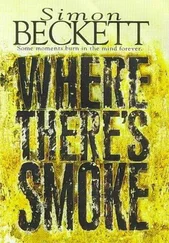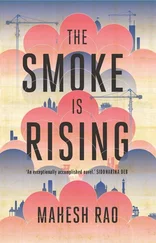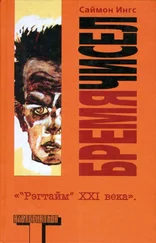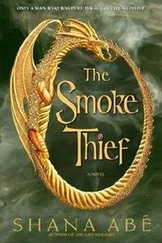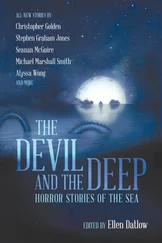You drink off your pint and set the jar down a good distance from you. The tabletop, black with varnish, is getting wet from your beer, and you do not want to damage the book.
Ascanius’s head bursts into harmless flame. Aeneas, resourceful, grabs a water jug from under the sink and chucks its contents at his son’s head. Creusa meantime chides the dripping boy, How many times must I tell you with the matches? Clueless, the lot of them; deep in defeat’s addlement, they don’t even realise that these harmless flames around their infant’s head are a sign from the heavens.
So the Gods, feeling generous, provide the family with yet another hint that all may be well, if only they’d get a bloody move on. Aeneas sees it first, scudding the heavens outside their door. It is an asteroid: a chunk of rock, about half a mile on its longest axis, white hot and shedding gobs of flaming stuff into the superheated air. It streaks over the dying city. This signal is unmistakable.
Time to go , says Aeneas, and loads his chumbling father on his back.
You leave the pub to catch the last of the daylight. October: the air is restless, the clouds intermittent and dirty against a sun that still thinks it’s summer. There’s rain on the other side of the valley, and a band of low blue cloud sweeping along like a curtain, so you take a short cut and turn off the road down a paved gutter, still wet from the morning and treacherous with dropped leaves, to a path above allotments. This is a route you found as a boy, cheating on a school run. It leads to the wooded cut where the remains of old engines founder among the roots of trees that only pretend to be ancient, and stone basins send fingers of rusty water rushing hither and thither, from terrace to terrace, to power the ghosts of freshly rotted wheels.
The local coal diggings were exhausted a generation ago, so the town regrouped on the valley floor to feed off coke that’s hauled up daily by railway from the strip-mines of Nottingham and Derbyshire. These days the town is busier than ever. New works, great mechanical mouths agape, belch smoke through stacks built tall as cathedral spires, taller, all to protect the lungs of the town, but it doesn’t make any difference. Smoke dribbles out of the chimneys, dribbles down and around them, especially on a day like this, and gathers in the streets and smuts the washing.
The old brick donkey path weaves behind a moss-green outcrop. As you follow it, you catch a brief glimpse of the town, steeped in its lake of smog like blue milk. The town is arranged as a series of terraces spreading like ripples from the big brute facts of spaceship factories. The town drowns in waves of smoke while up here, where the town’s story began – the first fires lit, the first iron smelted, sweet waters of the peat bogs blasted into screaming steam, and the region’s future literally forged – here the air is as sweet and rotten and brambly as any untouched hollow out by Byland or Rievaulx.
A cart rail hidden under dead leaves proves as slippery as black ice, and down you go. You pick yourself up, mouldy, cursing, and pat your coat pocket to check that your mother’s book is secure. Your hand meets your hip. You cast around. The Aeneid lies open in a muck of twigs. You pincer it up with forefinger and thumb and blow dead leaf fragments from its blue cloth covers and its frayed and faded spine. Not much damage done. You shake the thing, not hard, to free a leaf that’s stuck to an open page. A slip of paper falls from the back of the book. You put the book in your pocket and pick up the paper. It is folded once and you open it.
The paper is headed ‘Gurwitsch Subscription Hospital’ with an address in Queen Square in Holborn, London. It is the hospital your mother attended when she first took the rays. The letterhead is fancifully antique, but below, the details of an upcoming appointment – B-P ‘therapy’ and a date nine months old – have been dashed off by an ink-starved dot-matrix printer.
* * *
The ‘BP’ in BP therapy stands for biophotonics. The biophotonic ray is a cytological phenomenon discovered by the embryologist Alexander Gurwitsch. For that reason, it’s often called the ‘Gurwitsch ray’ or G-ray.
Gurwitsch, a Munich graduate and a Russian Jew, was born towards the end of 1874, the year of the Yellowstone Eruption. So far as biographers can ascertain, young Gurwitsch was the only member of his family to survive the global ten-year winter which followed North America’s fiery end. And thanks to the quick and generous actions of the family’s lawyer, he thrived.
Contemporary memoirs describe a bright boy, obsessed with colour. This was no uncommon obsession back then. Yellowstone’s profound effect on the atmosphere of Northern Europe, especially at dawn and dusk, fuelled a short-lived generation of consumptive and hungry artists. Gurwitsch’s first ambition was to join their starving ranks, and this, unusually, met no opposition from his patron. But he was no good, and after two busy yet barren years, Gurwitsch returned from the soup kitchens of Paris, his paintings and diaries consigned (ritually, and with a certain amount of drinking) to his friends’ fireplaces. He later quipped that his art had served the essential function of warming hands more talented than his own.
In starving Saint Petersburg, where a ban on domestic cats had brought forth rats the size of dogs, in rooms heavy with the smoke from burning furniture and even floorboards, the young Gurwitsch set about his second career. He became, of all things, an embryologist, fascinated by the mysteries of development.
Why do things grow the way they do? Why is growth such an orderly business? Especially: how does every part of the expanding foetus know at what rate to grow? At every stage of life, the foetus is exquisitely symmetrical, its internal organs developed in a manner perfectly suited to support its periphery. How is this possible? What constrains and encourages this roiling ball of fast-dividing cells to fashion itself into so intricate a form?
There were at the time two broad answers to this question. Gurwitsch’s lecturers were wont to throw up their hands and talk about the existence of pre-existing ‘templates’. But Gurwitsch, a young liberal, radicalised in Paris and hiding seditious German pamphlets behind his stove, preferred the more radical alternative. This hypothesised that the cells of the foetus actually communicate.
Gurwitsch’s militant materialism and powerful, disciplined imagination marked him out as a radical. He was arrested, served out a short period of exile, and maintained a secret correspondence with political and scientific figures in Vienna, London and Berlin. There was a revolution going on in the life sciences quite as profound as the revolution brewing among the trades unions of Paris and London, and Gurwitsch’s letters offer a fascinating, if bewildering, glimpse into years during which scientific and political questions were virtually indistinguishable.
The trouble was, Gurwitsch couldn’t get the painterly monkey off his back. He had all the makings of a liberal martyr, a Duma minister, a scientific entrepreneur like Koltsov or Vavilov, but, one by one, all the key public moments passed him by. His time became entirely absorbed by the conundrums of colour. Pigments and spectra. Constructed colour. Colour mixes. Colour wheels. Goethe’s anti-Newtonian maunderings. John Clerk Maxwell’s mistakes. The nonsense of the primaries. The tapestries of Le Blon. Canvases of Signac and Seurat. He wasn’t, by a long chalk, the only Russian intellectual to succumb to the temptations of ‘internal exile’, using personal study as a shelter from the political chaos outside. Read any short story by Turgenev. Attend any play by Chekhov. And so his tale might have ended: another one of Russia’s lost generation of Francophile pantaloons.
Читать дальше



